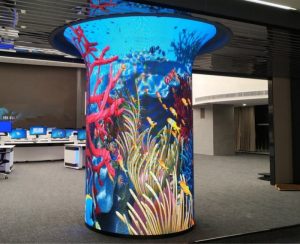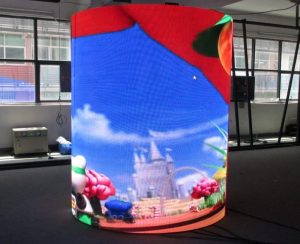Small-pitch LED large-screen conference applications are mainly products for 100-200 inch displays and 25-150 square meters of medium-sized conference room venue applications. Compared with traditional large LED screens, these products have important application experience differences. In other words, the viewer cannot get enough space from the display. ——In other words, if you look at it up close, it becomes the core feature of the LED single screen in the conference room. Combined with the interactive application in front of the screen, this kind of “close to the eye” viewing requirement is more prominent.
Therefore, small-pitch LED single-screen conference room applications need to meet many new requirements from “visual effects” to “close-up viewing.”
Display advantages of small spacing
First of all, this is an application scenario dominated by high-resolution products. For example, LCD products basically reach 4K resolution, and conference projector products have a resolution of 720p or higher. At present, the small-pitch LED products for conferences mainly use 2K resolution products, while breaking through 4K technology technically and further developing to 8K technology. In the future, the screen fineness similar to LCD and projector can be formed to further overcome the problem of pixel granulation.
Secondly, compared with traditional projection and flat panel display products, the biggest difference between small-pitch LED displays is that the pixel granularity and brightness are too high. Mini-led technology makes the optical structure design space at the end of the chip looser, helping to reduce the average brightness and better viewing the product.
Third, when viewing small-pitch LEDs, the advantages of contrast and color are very obvious. Especially compared with traditional projection conference applications, bright screens do not require additional environmental shadow measures. When applied to remote video conferences, the effect of the led screen under the camera is also very prominent, and the high refresh rate can avoid the dark bars on the screen, so it is an ideal display technology choice.
In short, mini-led display technology has unique visual advantages when applied to conference displays. In addition, through the continuous technological advancement in recent years, considerable results have been achieved in terms of “deficiencies”. Due to the disadvantages of competing technologies such as the light-fearing characteristics of projection displays and the difficulty of LCD liquid crystal displays to break through the 100-inch size limit, small-pitch LED screens are becoming a good multimedia technology route for medium and large conference rooms.



